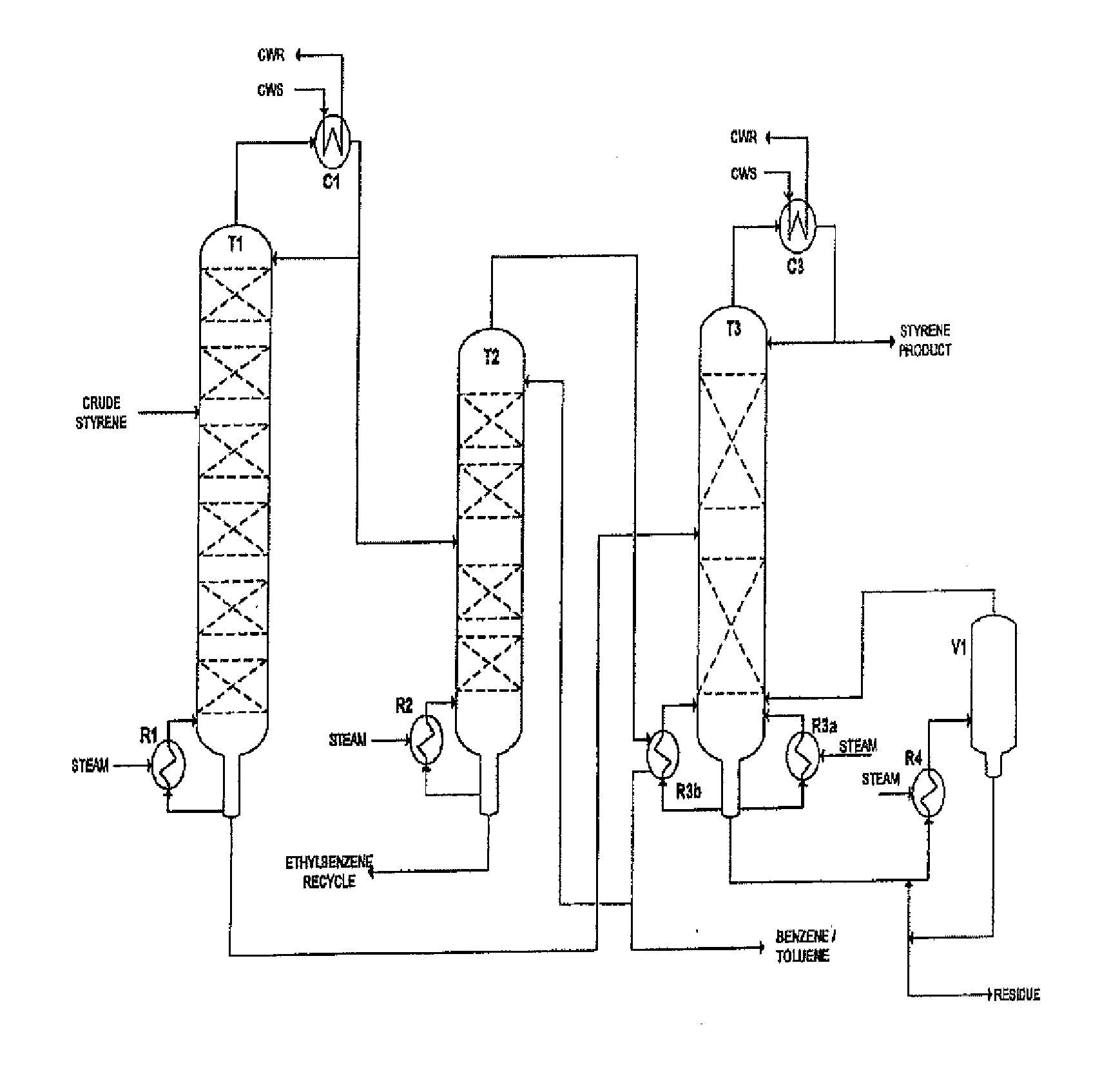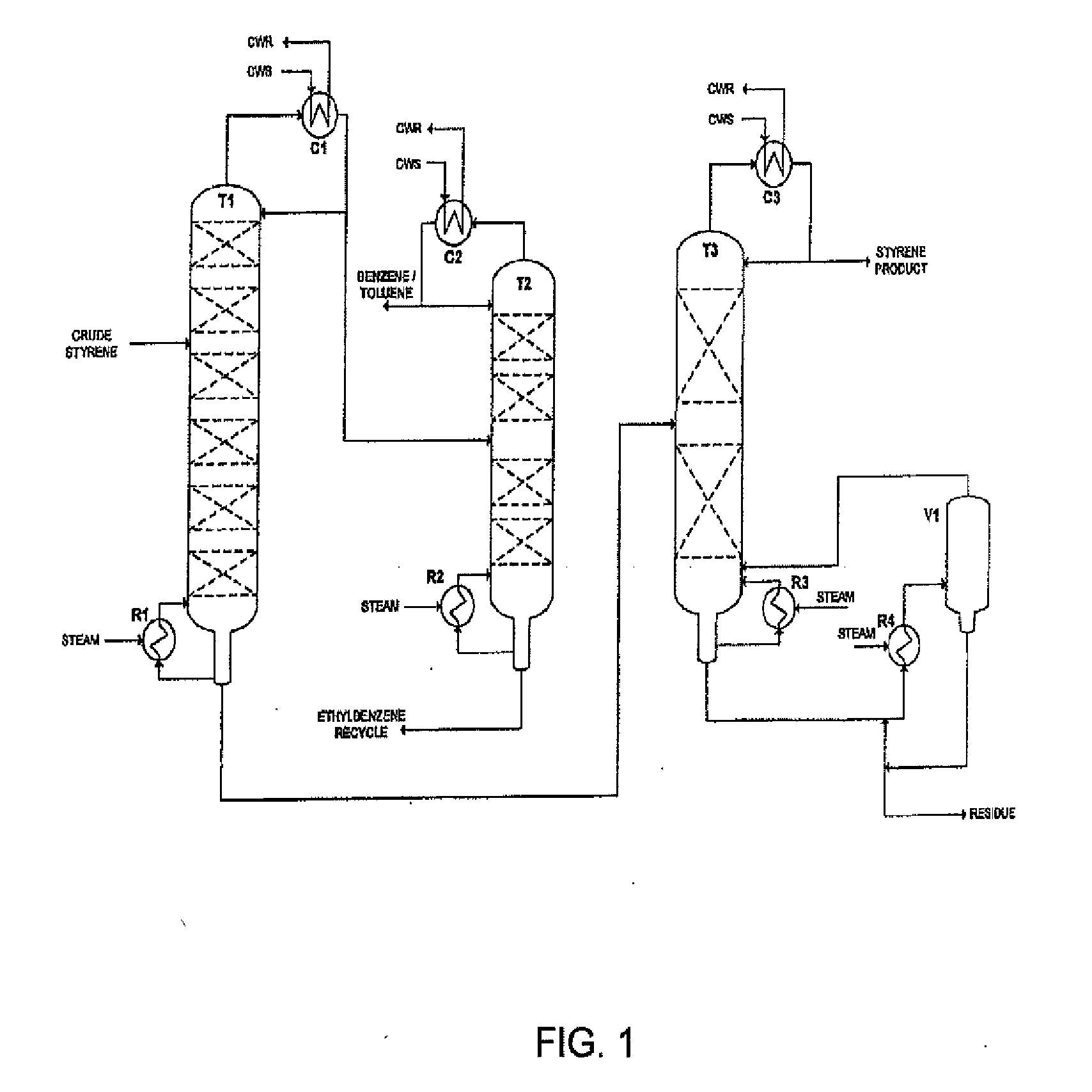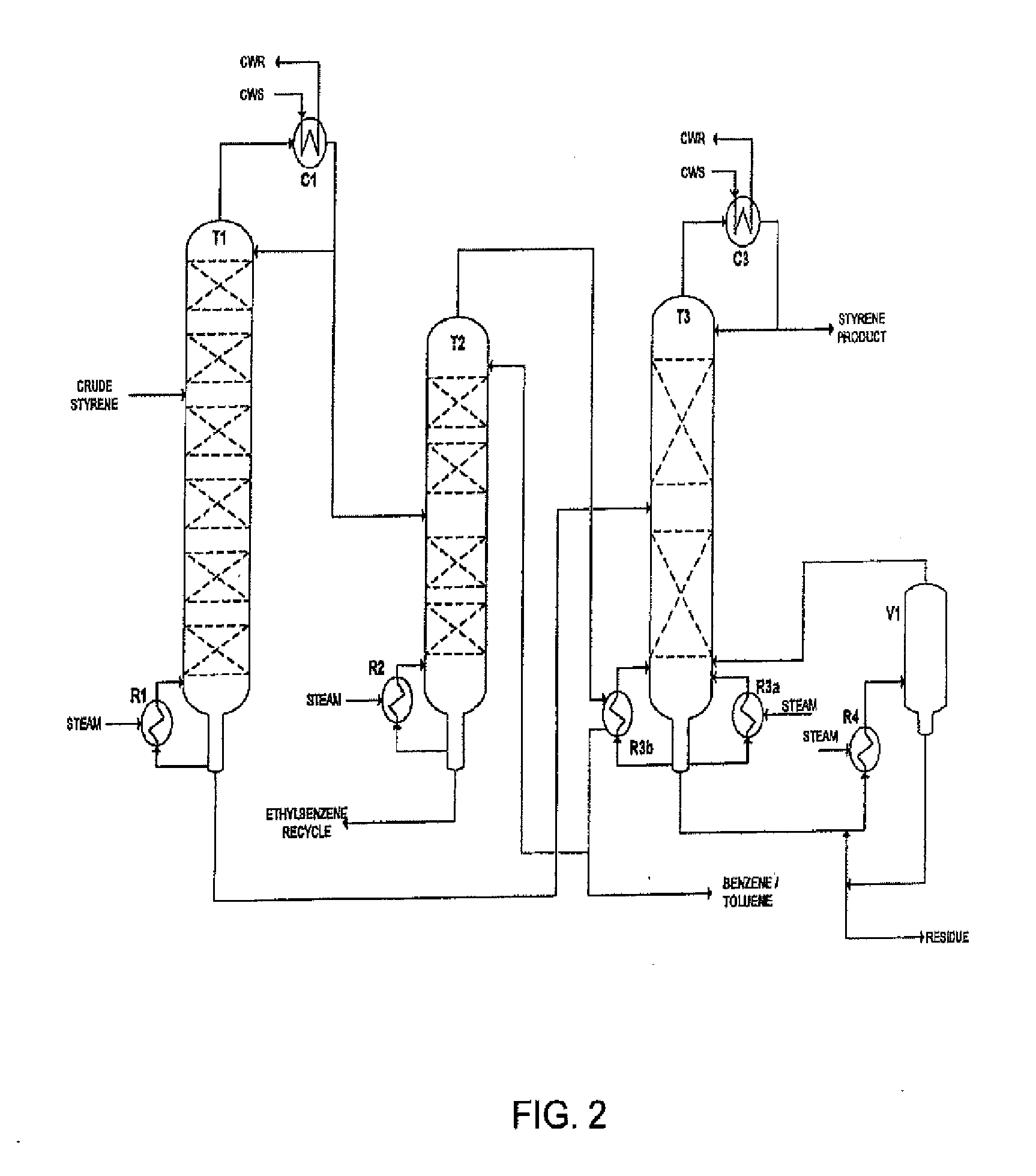Method for reducing energy consumption in a process to purify styrene monomer
- Summary
- Abstract
- Description
- Claims
- Application Information
AI Technical Summary
Benefits of technology
Problems solved by technology
Method used
Image
Examples
example 14
[0053 represents the upper limit of operating conditions for benzene / toluene column T2 and styrene finishing column T3, with trays as internals for both columns and a 15° C. temperature approach in styrene finishing column reboiler R3b.
[0054]The amount of heat that can be recovered by finishing column reboiler R3b depends on several parameters including but limited to, the number of theoretical stages (NTS) in benzene / toluene column T2, the number of theoretical stages in the styrene finishing column T3, operating pressures, concentration of toluene in the bottoms of the benzene / toluene column T2, the concentration of ethylbenzene in the overheads of the benzene / toluene column T2, the recovery of styrene in the styrene finishing column T3, and concentration of AMS in the distillate of styrene finishing column T3.
[0055]Table 3 presents Example 5 from Table 2, which is compared to Examples 15-24 having variations of the some of the above mentioned parameters.
TABLE 3Effect of various ...
example 23
[0066, the number of theoretical stages (NTS) in benzene / toluene column T2 is increased by 18. This change has a similar affect as the increase in toluene concentration allowed in the bottoms of benzene / toluene column T2 in Example 18. Adding more NTS to benzene / toluene column T2 made the separation of benzene and toluene from ethylbenzene slightly easier, and therefore lowered the reflux rate and decreased the amount of overhead vapor to supply duty to styrene finishing column reboiler R3b.
[0067]Example 24, the number of theoretical stages (NTS) in benzene / toluene column T2 is increased by 6. This change has a similar affect as the decrease in toluene concentration allowed in the bottoms of benzene / toluene column T2 in Example 17. Adding more NTS to benzene / toluene column T2 made the separation of benzene and toluene from ethylbenzene slightly harder, and therefore, increased the reflux rate and decreased the amount of overhead vapor to supply duty to styrene finishing column rebo...
PUM
| Property | Measurement | Unit |
|---|---|---|
| Fraction | aaaaa | aaaaa |
| Pressure | aaaaa | aaaaa |
| Pressure | aaaaa | aaaaa |
Abstract
Description
Claims
Application Information
 Login to View More
Login to View More - R&D
- Intellectual Property
- Life Sciences
- Materials
- Tech Scout
- Unparalleled Data Quality
- Higher Quality Content
- 60% Fewer Hallucinations
Browse by: Latest US Patents, China's latest patents, Technical Efficacy Thesaurus, Application Domain, Technology Topic, Popular Technical Reports.
© 2025 PatSnap. All rights reserved.Legal|Privacy policy|Modern Slavery Act Transparency Statement|Sitemap|About US| Contact US: help@patsnap.com



